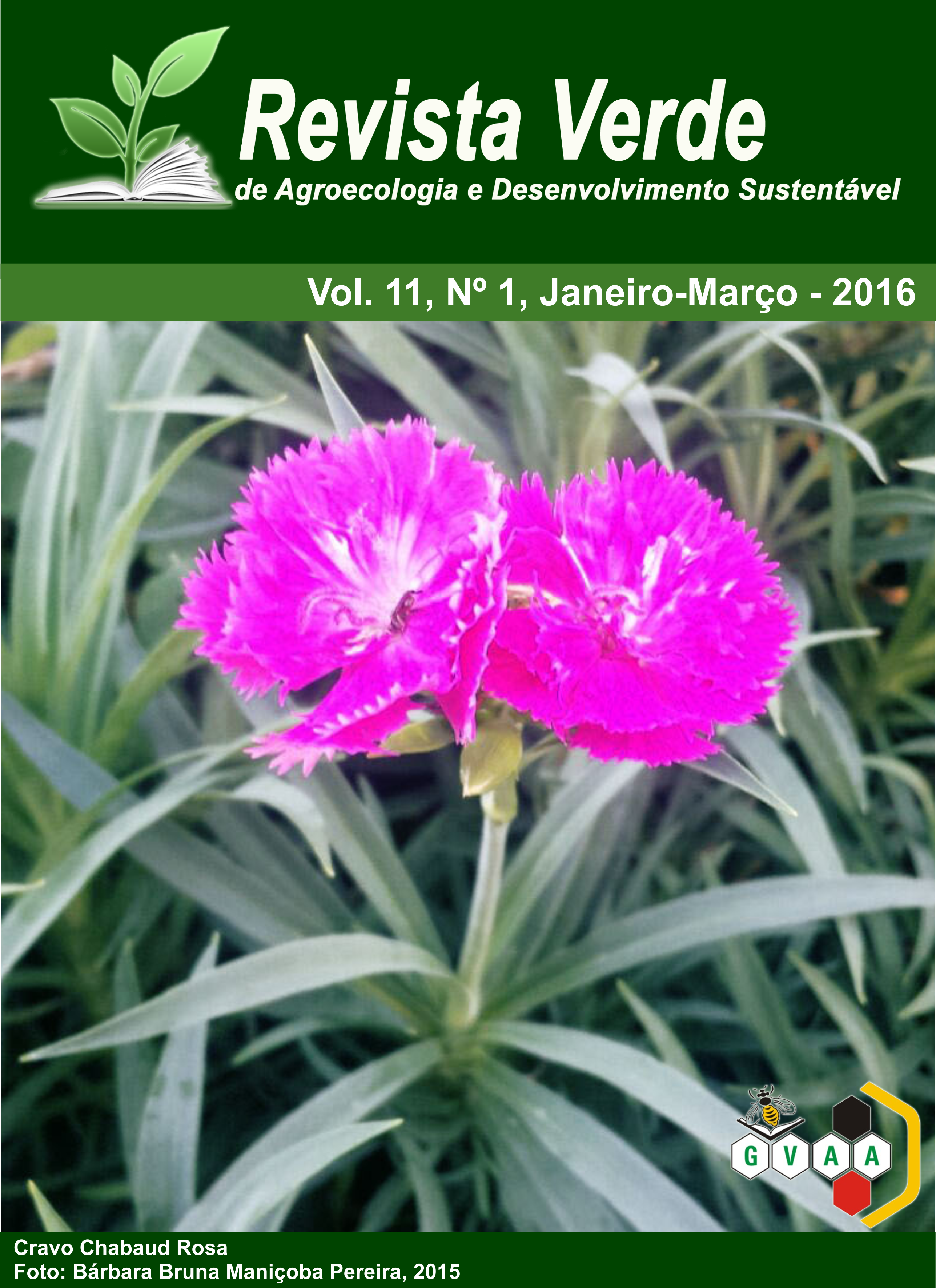Componentes agronômicos e produtividade do milho em diferentes sistemas de produção
DOI:
https://doi.org/10.18378/rvads.v11i1.3825Keywords:
Cultivo consorciado, Integração lavoura-pecuária, Rotação de cultura, Sistema sustentável.Abstract
A crescente competitividade no setor rural exige a substituição do modelo produtivo tradicional por sistemas que possibilitem a maximização do uso do solo. Objetivou-se avaliar os componentes produtivos da cultura do milho em diferentes sistemas de produção em dois anos agrícolas. Os tratamentos foram constituídos por milho solteiro no sistema convencional e via integração com cultivares de Urochloa brizantha e sistema de rotação de cultura milho/milheto no primeiro ano agrícola e milho no segundo. O delineamento experimental foi em blocos casualizados, em esquema fatorial 3x2+1, com quatro repetições. As variáveis avaliadas foram: tamanho e diâmetro de espiga, número de linhas e grãos por espiga, peso de mil grãos, estande final de plantas e produção de grãos de milho por planta e hectare. Os dados quando significativos foram comparadas pelo teste F ao nível de 5% de probabilidade de erro. Em relação ao tratamento adicional, foi utilizado o teste de Dunnett a 5% de significância. Os sistemas integrados com cultivares de Urochloa brizanthae e o sistema com rotação de cultura não promoveram alterações nos componentes produtivos da cultura do milho, além de melhorar a produtividade ao longo do tempo e promovem melhorias nas características químicas do solo. A Urochloa brizantha cv. Marandu e Piatã demonstraram seu potencial e viabilidade em sistema em sistema integrado em Neossolo Quartzarênico.
Agronomic components and maize productivity in different production systems
Abstract: Growing competitiveness in the rural sector requires the replacement of the traditional productive model with systems that make it possible to maximize land use. The objective of this study was to evaluate the production components of corn in different production systems in two years. The treatments consisted of single maize in the conventional system and via integration with cultivars of Urochloa brizantha and rotation system of maize/millet crop in the first agricultural year and corn in the second. The experimental design was in randomized blocks, in a 3x2+1 factorial scheme, with four replications. The variables evaluated were: spike size and diameter, number of rows and grains per ear, weight of one thousand grains, final plant stand and corn grain yield per plant and hectare. The significant data were compared by the F test at the 5% error probability level. Regarding the additional treatment, the Dunnett test was used at 5% significance level. The integrated systems with cultivars of Urochloa brizanthae and the system with crop rotation did not promote changes in the maize crop production components, besides improving productivity over time and promoting improvements in soil chemical characteristics. The Urochloa brizantha cv. Marandu and Piatã demonstrated their potential and viability in an integrated system in Quartzarenic Neosol.













